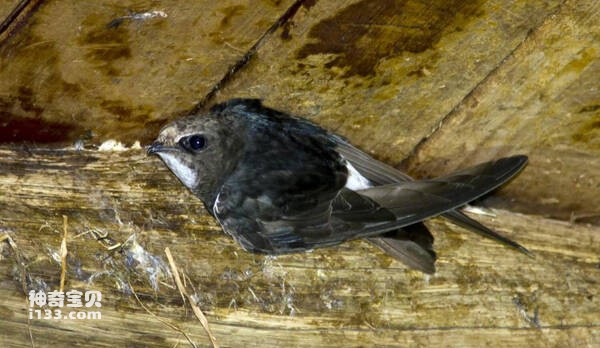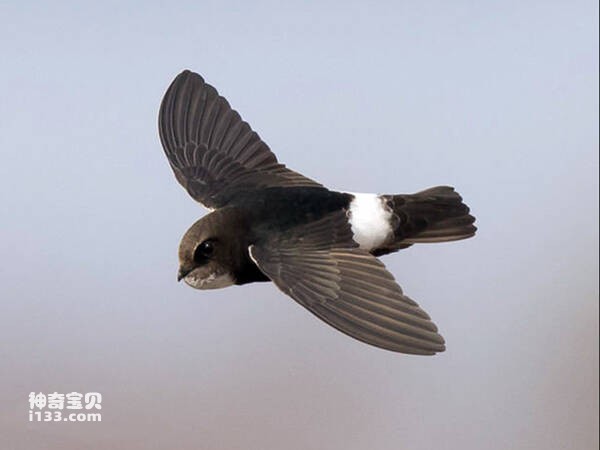Apus affinis
IUCN
LCBasic Information
Scientific classification
- name:Apus affinis
- Scientific Name:Apus affinis,Little Swift,House Swift,Martinet des maisons
- Outline:Climbing birds
- Family:
Vital signs
- length:About 12 cm
- Weight:25-31g
- lifetime:15 years or so
Feature
The tail looks round when fully unfolded
Distribution and Habitat
Resident Bird: Algeria, Angola, Benin, Botswana, Burkina Faso, Burundi, Cameroon, Central African Republic, Chad, Democratic Republic of the Congo (DRC), Congo (Burkina Faso), Cote d 'Ivoire, Djibouti, Egypt, Equatorial Guinea, Eritrea, Swatini, Ethiopia, Gabon, Gambia, Ghana, Guinea, Guinea-Bissau, Iraq, Jordan, Kenya, Lae Soto, Liberia, Libya, Madagascar, Malawi, Mali, Mauritania, Morocco, Mozambique, Namibia, Niger, Nigeria, Rwanda, Saudi Arabia, Senegal, Sierra Leone, Somalia, South Africa, South Sudan, Sudan, Syria, Tanzania, Timor-Leste, Togo, Tunisia, Uganda, Zambia and Zimbabwe.
Breeding grounds: Afghanistan, India, Iran, Israel, Pakistan, Palestine, SAO Tome and Principe, Spain, Sri Lanka, Tajikistan, Turkey, Turkmenistan, Uzbekistan and Yemen.
Non-breeding place: Kuwait.
Travellers: Lebanon, Oman and UAE.
Wandering (Traveller) : Bahrain
Wandering: Australia, Bulgaria, Greece, Ireland, Italy, Maldives, Malta, Portugal, Seychelles, Sweden and the United King
Appearance
The small swift is about 12 cm long and has a wingspan of 32-34 cm. Weight 25-31 grams. A small, smoke-black swift having a white throat and rump, a short square tail, and long, narrow wings. The tail is flat and the middle is slightly concave. The waist is white, the feather shaft is brown, and the tail is dark brown, with copper luster. The wings are slightly wider and ash-brown in color. Chin and throat are grayish white, buccal pale brown. The rest of the underbody is dark grayish-brown. The undertail coverts are grayish brown, the mouth is blackish brown, the front tarsometatarsus is feathered, the color is grayish brown. Iris dark brown, mouth black; Feet and toes dark brown.
Young birds are similar to adults. However, the head is slightly grayish-brown with a grayish-brown feather margin, and the lower body is dark brown with a grayish-white feather margin and slightly glossy. The waist, chin and throat plumage are not obvious.
The Lesser Swift was once part of the Lesser
Details
The small Swift (Apus affinis) has six subspecies: Little Swift, House Swift, Martinet des maisons.

Small swift populations in the far western Palaearctic region and southern Africa are partially or entirely migratory, but populations in the tropics are resident birds. The young swifts that live in Turkey are entirely migratory, but it is not known where they spend the winter.
Small swifts roost and live in groups, sometimes numbering in the hundreds. Often flies in groups with other species such as the house swallow. Flying quickly, often with a quick flapping of the wings followed by a glide, often alternating between the two. Its range of activities is wide, from the vicinity of villages and towns to high mountains and dense forests have seen the bird activity. After rain, it is often seen to fly in clusters over karst cave areas, sometimes moving in circles neatly. During mating, males and females chase each other. It was very loud, and the sound was very loud, and it made a "hiss - hiss - hiss" cry. Especially near breeding grounds. A rapid, high-pitched warbling call is made in the evening to midnight and early morning.

They usually hunt invertebrates at high altitudes, catching various flying insects. It feeds mainly on hymenoptera insects such as mosquitoes. Sometimes they forage 15 to 20 km from the nest. A permanent body of water is needed for drinking.
The breeding season of the swift varies throughout its range: in Mauritania, breeding occurs from February-May and August-January; It breeds from October to July in Senegal and Gambia, and year-round in the West African rainforest. Often bred in pairs or in small groups, the nests are built in dense, often overlapping clusters, usually under eaves, beams, Bridges, sometimes using cliff sites and abandoned Hirundo nests, or in old bird nests and other bird sites. There are records of forced evictions by house sparrows and other birds.

The nest is a sturdy, messy, but neat and smooth, hemispherical "bag" of plants, made of fine plant fibers, grasses, feathers, ceiba floss, reed floss and soil, mixed with bird mouthfuls or wet mud. The shape of the nest is saucer-shaped, cup-shaped, spherical and other types, depending on the nesting environment. The nest is extremely soft and smooth, especially the nest mouth. The nest is often padded with thin grass stems and feathers. The outer diameter of the nest is 12-20 cm, and the inner diameter is 7-10 cm. There are up to 3 entrances, sometimes public. Each clutch lays 2-4 eggs. The size of the eggs is (21-26) mm x (14-16) mm, with an average of 22.7×15.0 mm. The male and female incubate the eggs in turn. The incubation period lasts 22-24 days and it takes at least 38 days for the young birds to be fed by both parents.
The size of the small swift's global species population has not been quantified. In Europe, the breeding population is estimated at 900-2,500 pairs, equivalent to 1,800-5,000 mature individuals (BirdLife International 2015), but Europe accounts for less than 5% of the global total. The number of species is thought to be increasing due to the expansion of the range caused by mainly adapting to nesting in buildings (del Hoyo et al., 1999). It is estimated that Europe, where numbers are scarce, will decline by at least 10% over 37.5 years (three generations) (BirdLife International 2015).
Listed on the IUCN Red List of Threatened Species (IUCN)2016 ver3.1 - Not Threatened (LC).
Protect wild animals and eliminate wild meat.
Maintaining ecological balance is everyone's responsibility!








